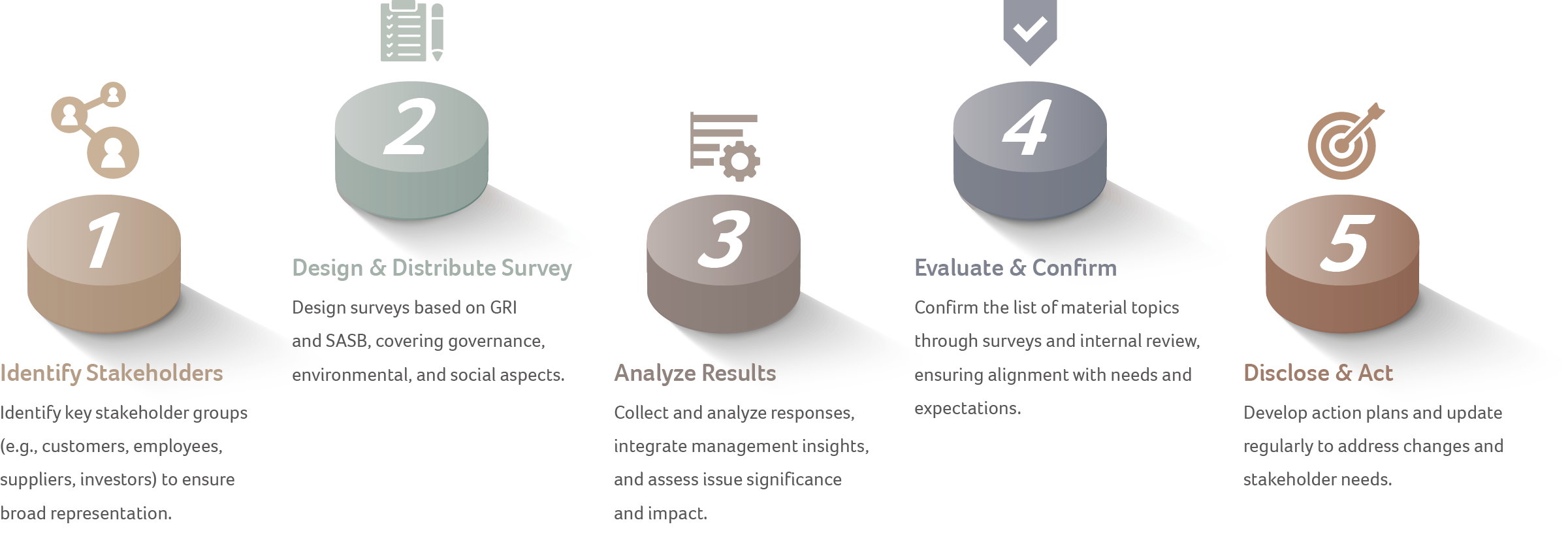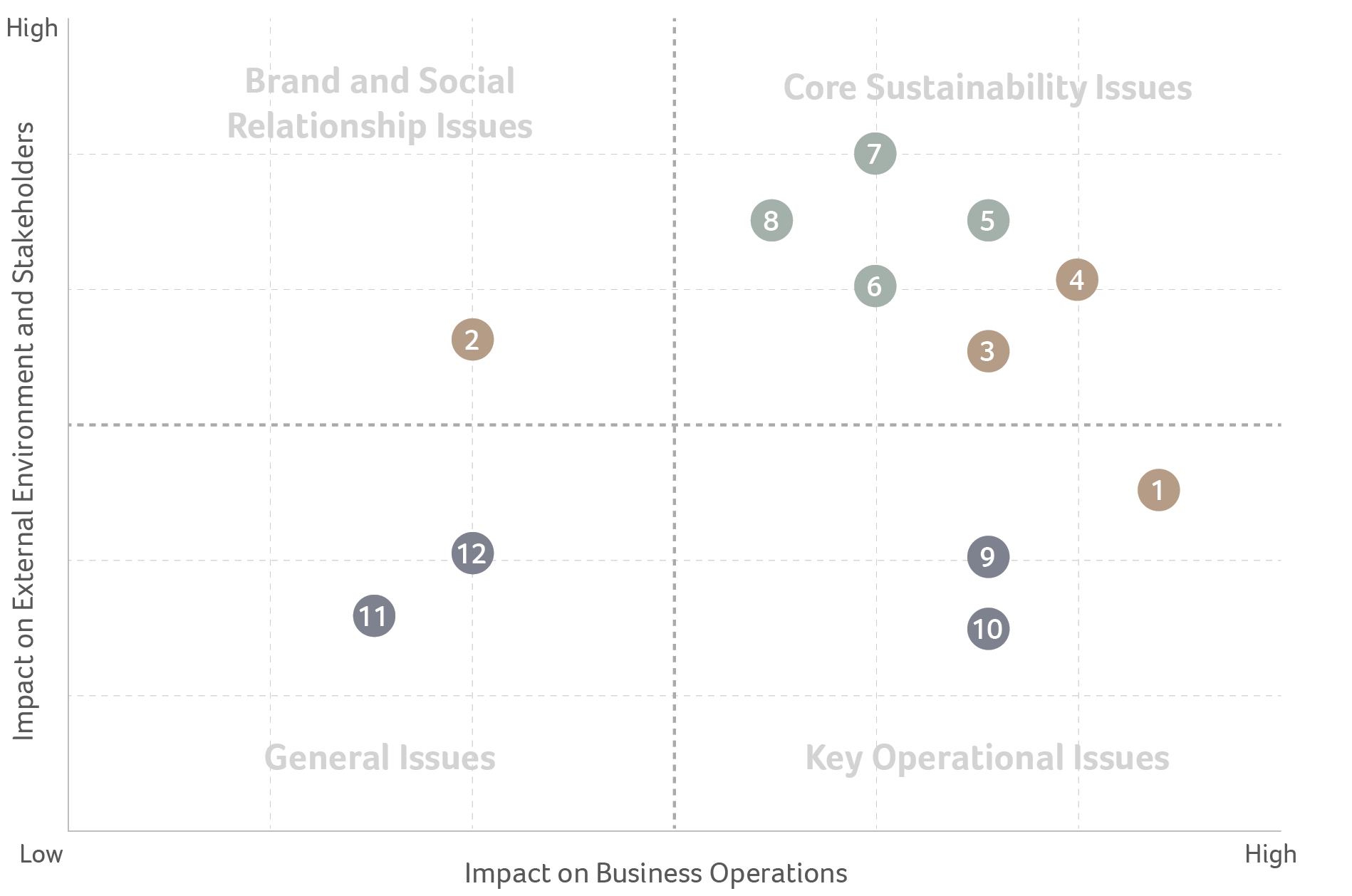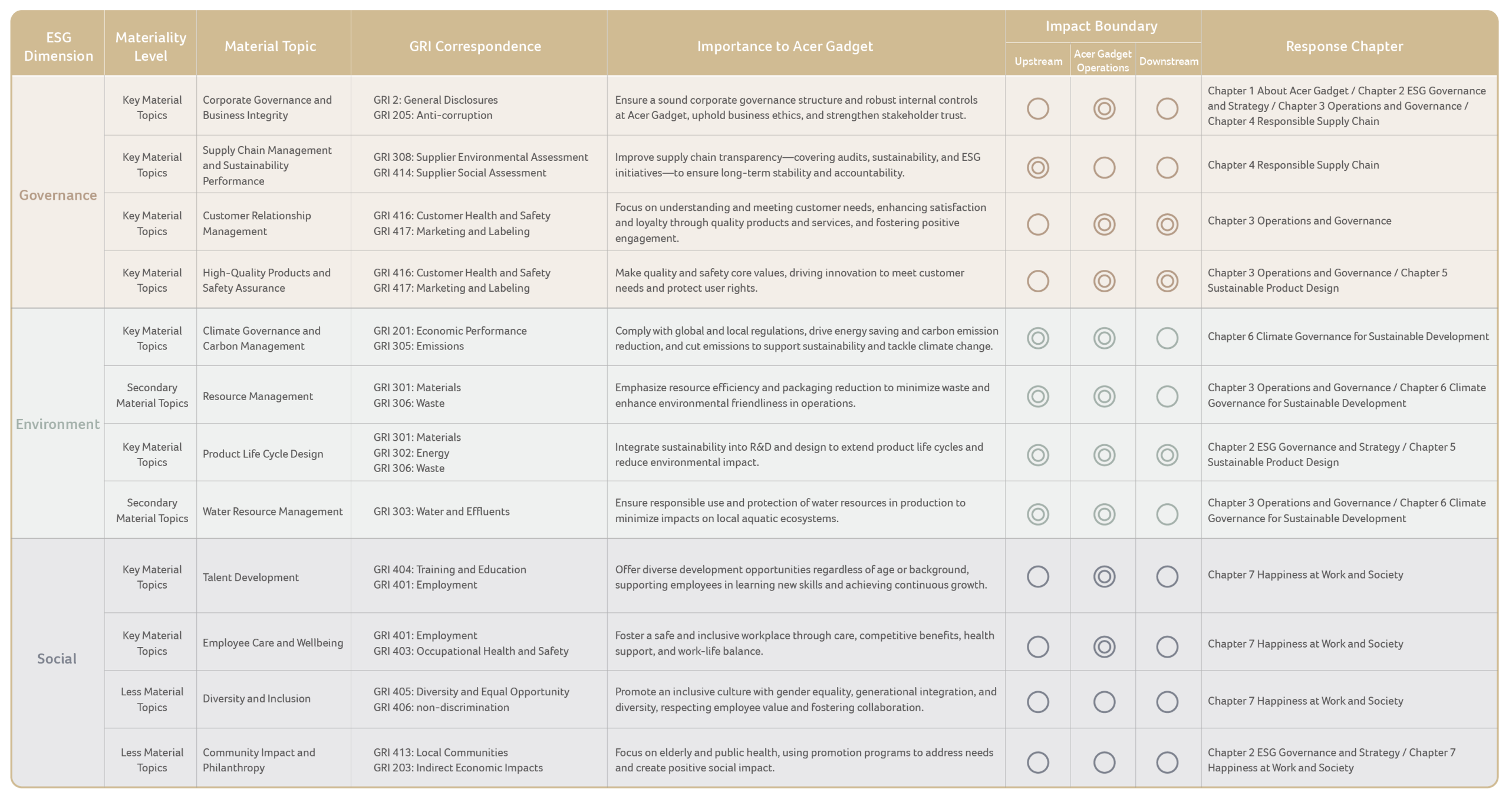Materiality Assessment
and Management
Acer Gadget has established a systematic process for materiality assessment based on the Global Reporting Initiative (GRI) Standards and the Sustainability Accounting Standards Board (SASB) metrics, combined with the Company’s operational characteristics and stakeholder survey results. By collecting input from both internal and external sources, we ensure that material topics accurately reflect stakeholder expectations and the Company’s sustainability needs. This section outlines the assessment process and outcomes, highlighting Acer Gadget’s commitments and actions in its sustainability strategy.
Materiality Assessment Process
Integrating survey results, Acer Gadgetconducts materiality assessment through the following steps, placing stakeholder participation at the core.

Classify Material Topics by Category
Materiality Matrix
To identify and manage material sustainability issues, Acer Gadget developed the following Materiality Matrix by applying international standards from GRI and SASB, and assessing the impacts on both company operations and external stakeholders. The matrix reflects Acer Gadget’s prioritization of each issue and serves as a key reference for formulating sustainability strategies and action plans.

Impact Boundaries Across the Value Chain
To ensure that the results of the materiality assessment reflect actual business impacts and stakeholder concerns, Acer Gadget collected input from key stakeholders—including suppliers, internal operations teams, customers, and investors—through surveys. Following GRI and SASB standards, each topic was assessed for its impacts across different stages of the value chain (upstream, Acer Gadget operations, and downstream).

